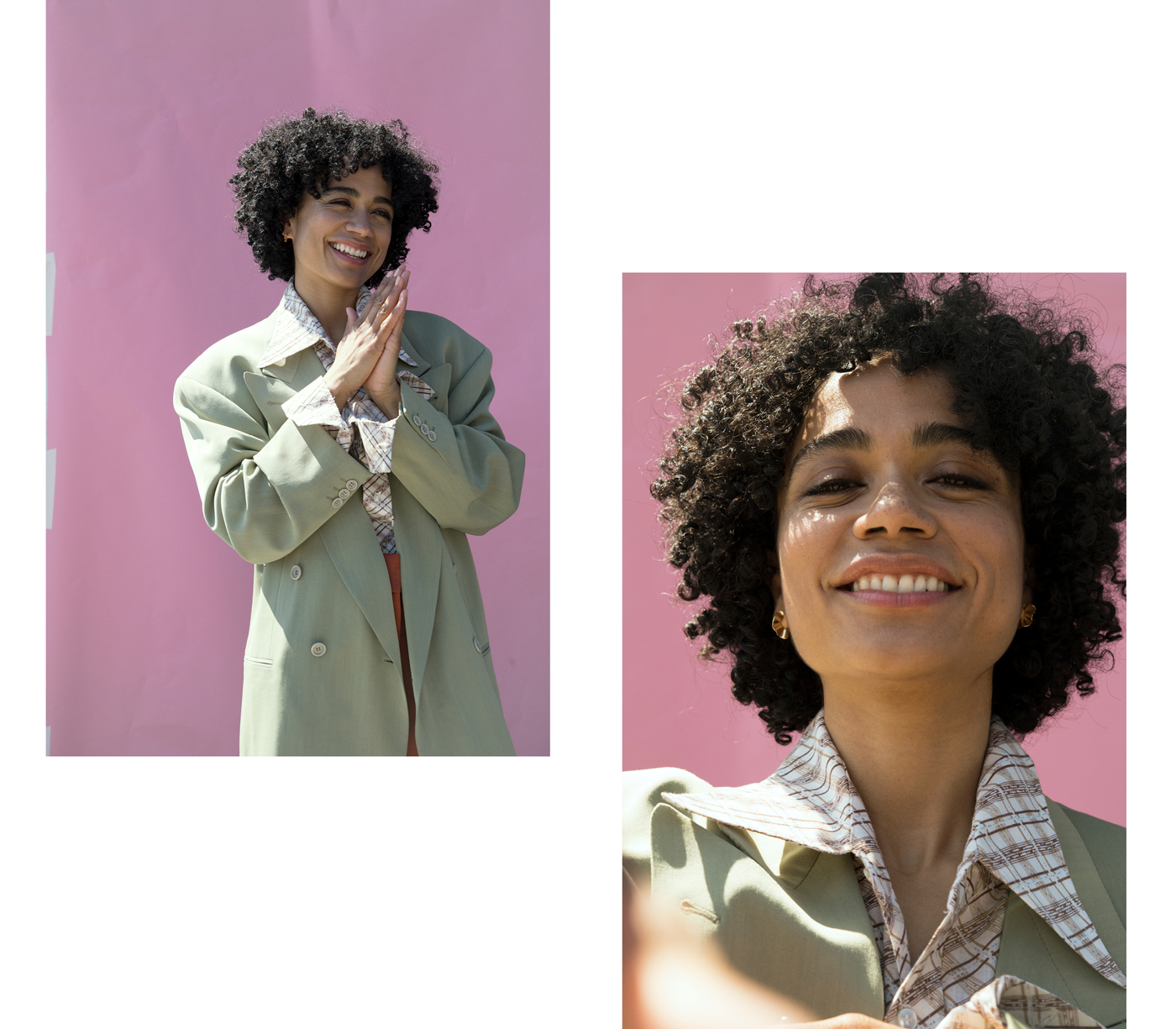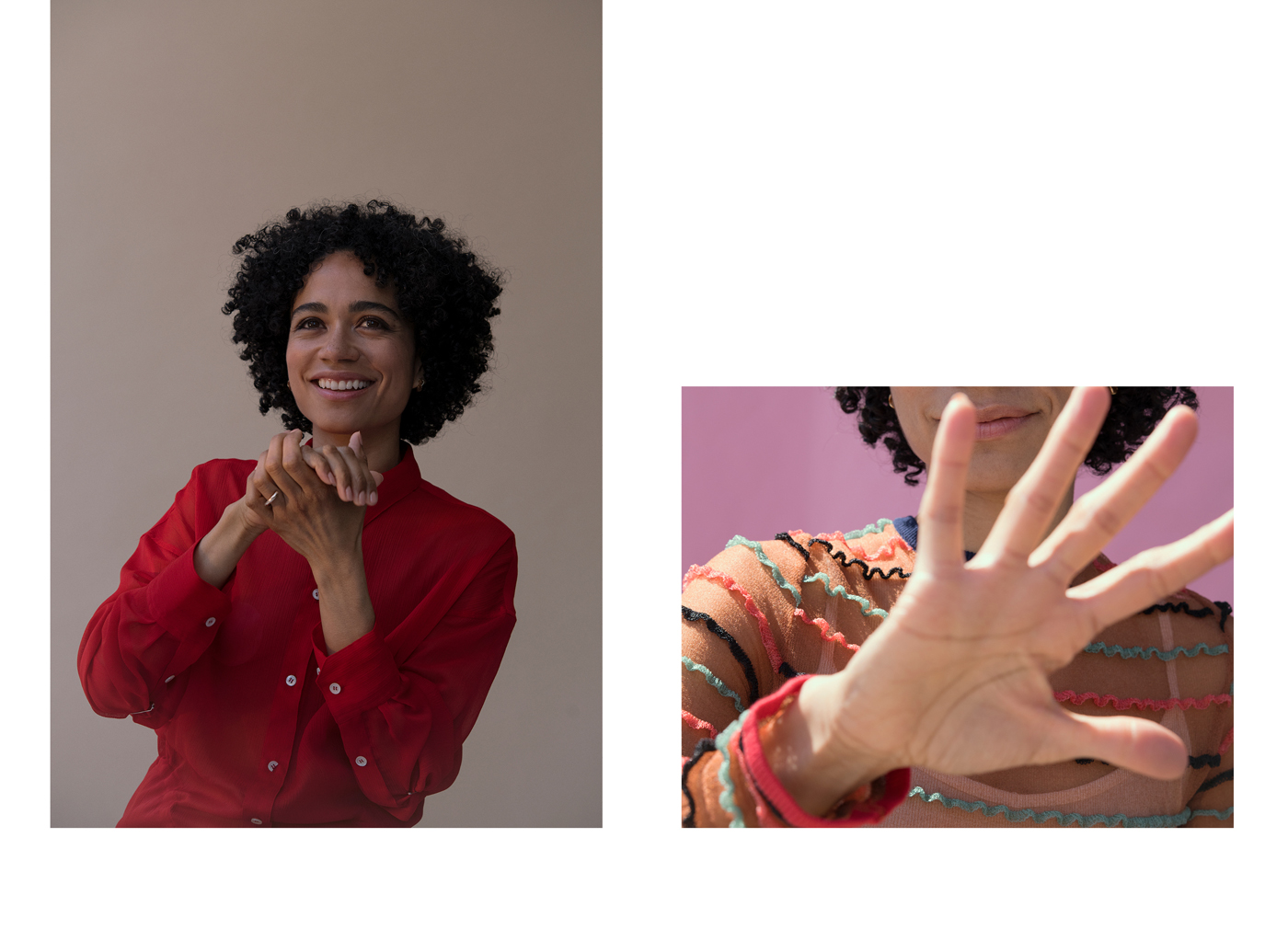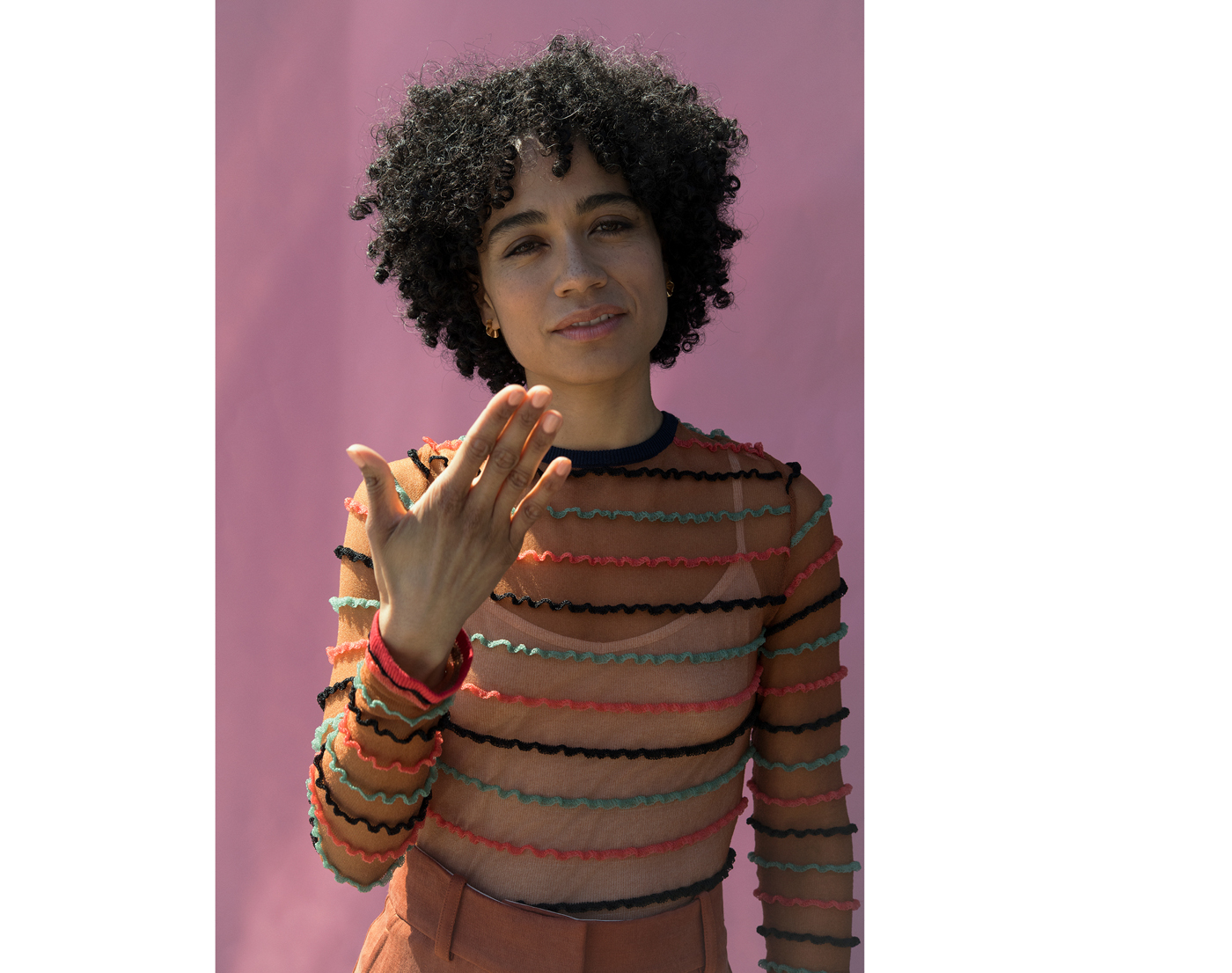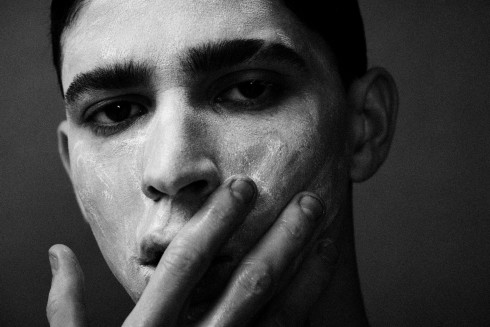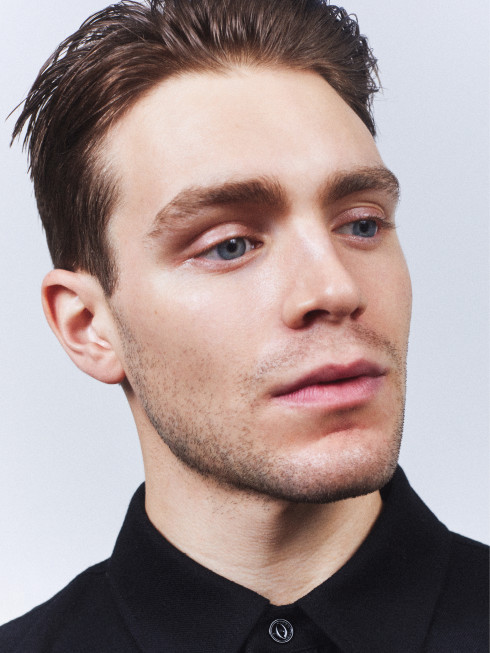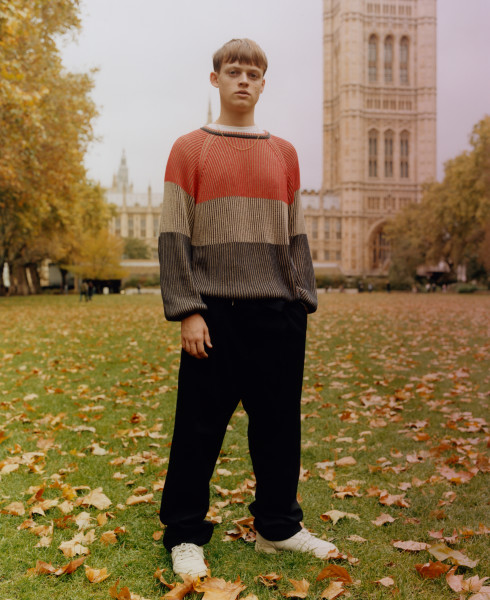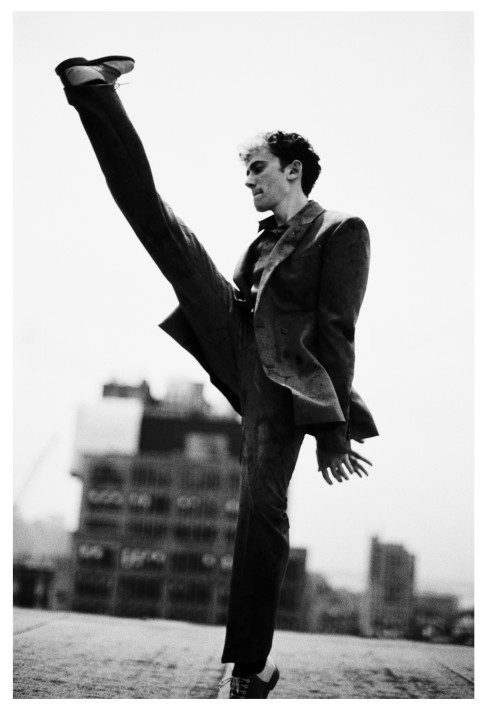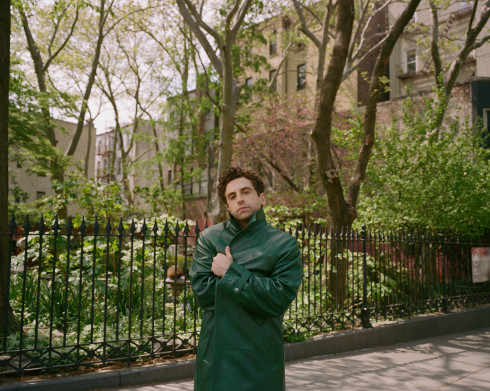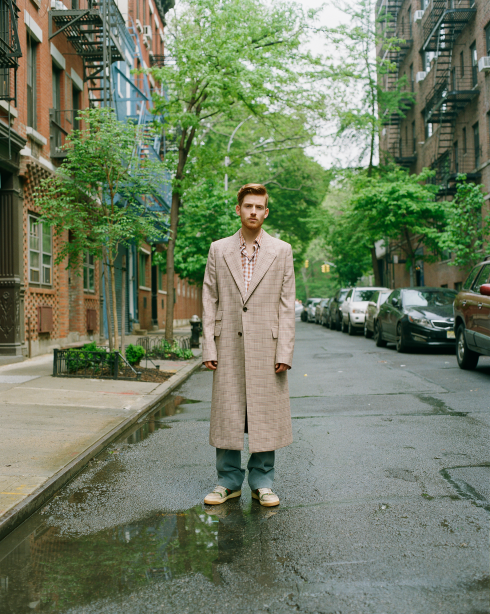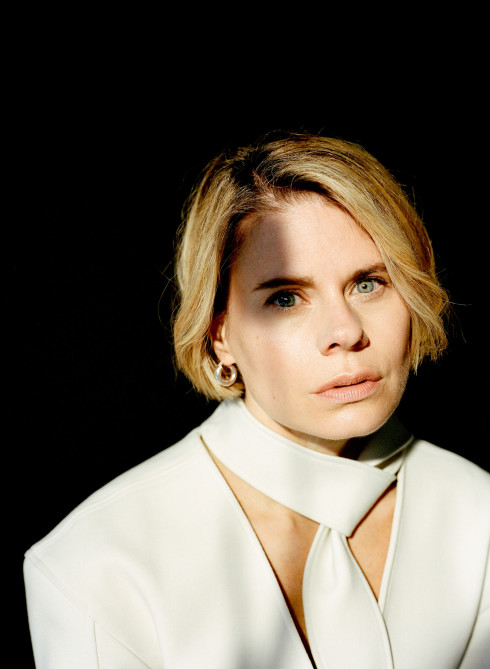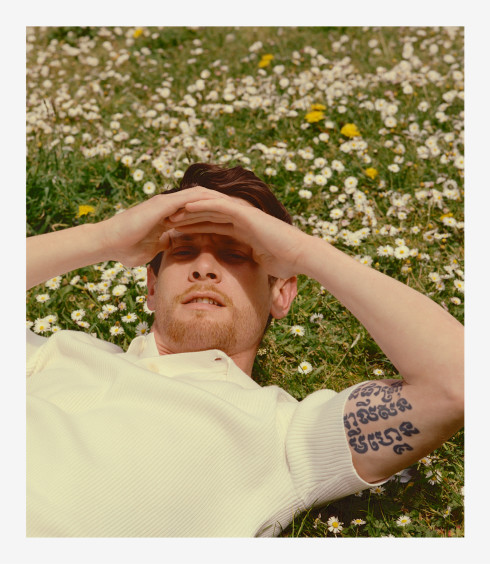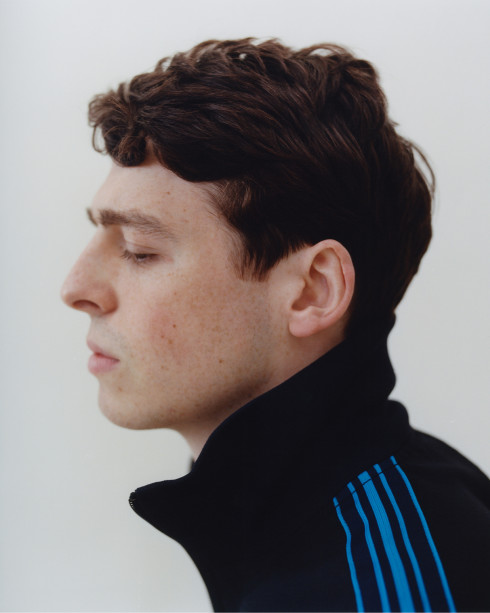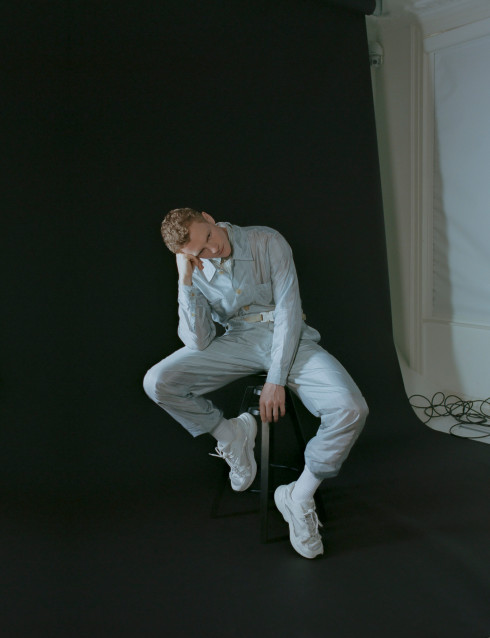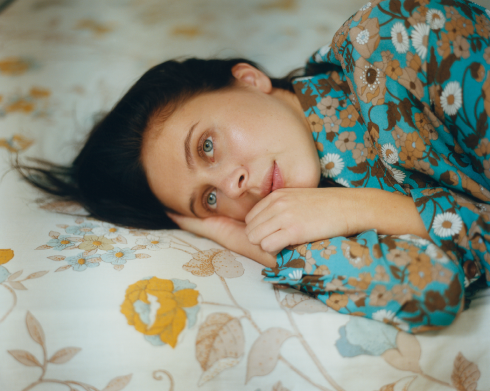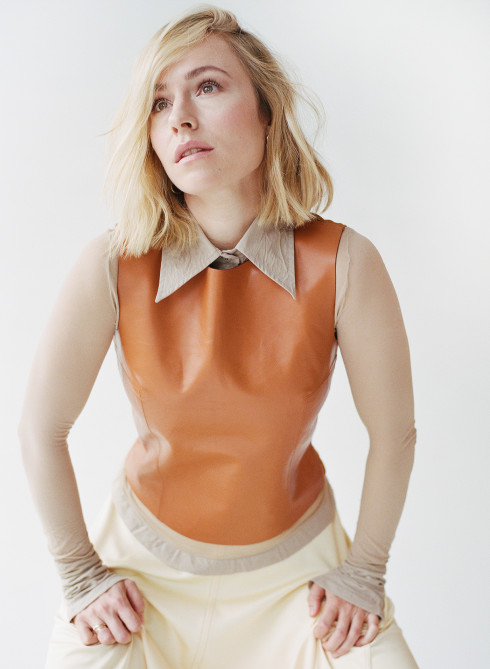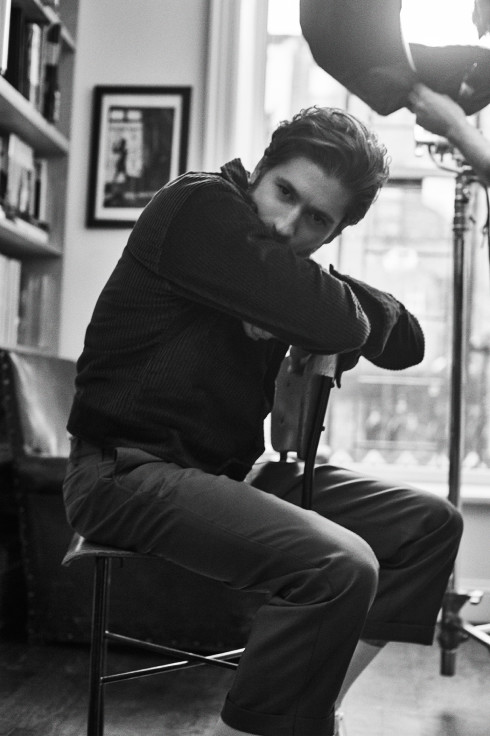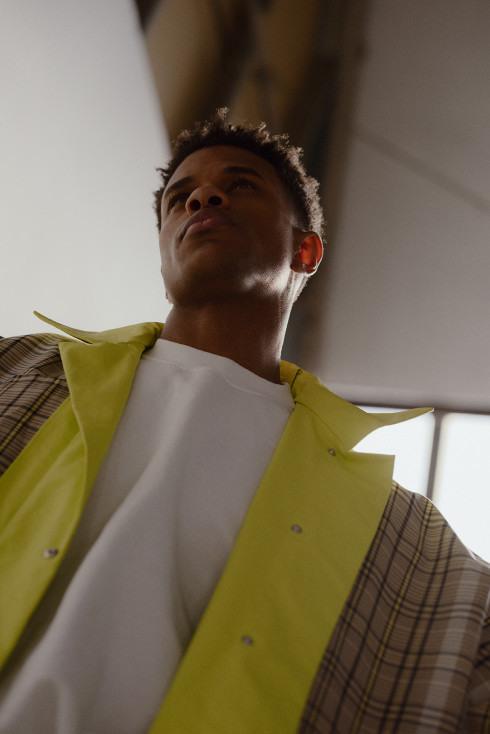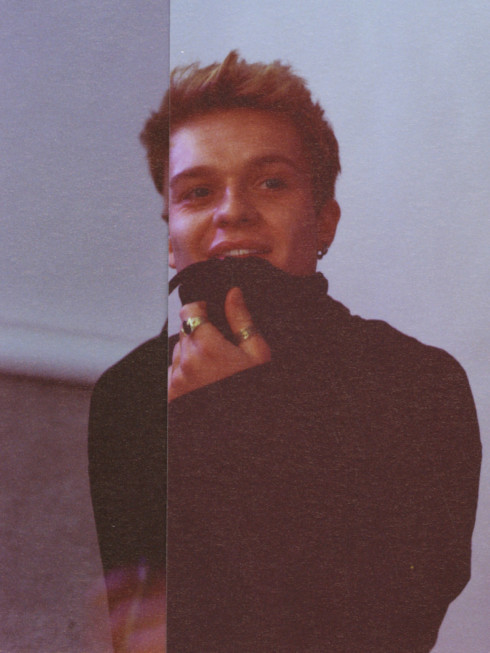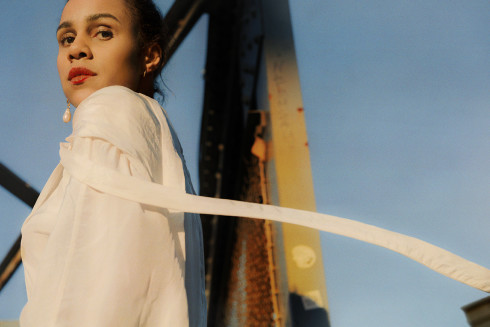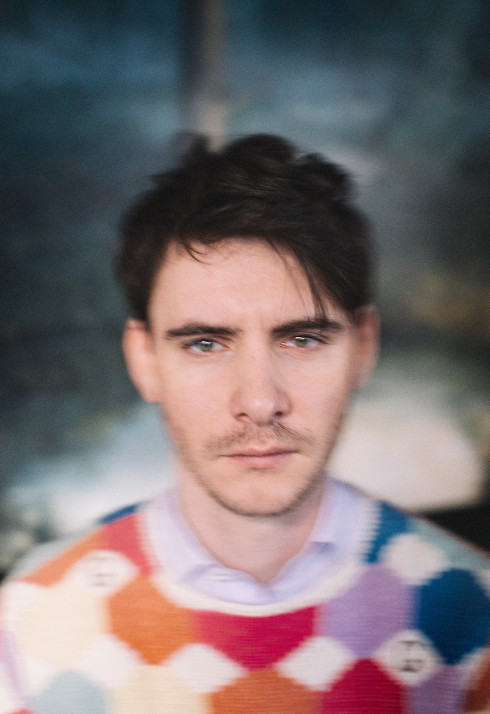
Top by Rachel Comey. Trousers by Sies Marjan. Earrings, worn throughout, by Otte. Ring by Bonheur.
- By
- Jonathan Shia
- Photography by
- Annelise Phillips
Styling by Carolina Orrico at Jones Management. Hair by Yukiko Tajima at See Management. Makeup by Seong Hee Park at Julian Watson Agency. Photographer’s assistant: Kasandra Torres. Stylist’s assistant: Sasha Clyde. Shot at Slate Studios, New York.
LAUREN RIDLOFF GOES FROM TEACHER TO TONY-NOMINATED ACTRESS
On the morning of May 1, the actress Lauren Ridloff received two surprises. One, her first-ever in-home massage—a birthday present for her and her husband from her costar Joshua Jackson which she had forgotten she had scheduled—showed up at her front door. The other came over her phone: news of her Tony nomination for Best Actress for her début stage performance in Mark Medoff’s Children of a Lesser God, which left her stunned. “It was a really interesting way to start the day!” she jokes.
Hours later, she is still visibly glowing when she discusses the shock of her nomination, which she earned for playing Sarah, a deaf woman who works at a janitor at a school for the deaf who falls in love with one of the teachers, played in the recent Broadway revival by Jackson. The play, which first premiered in 1979 and was adapted into an award-winning film in 1986 (Marlee Matlin, who became the only deaf actor to win an Oscar to date thanks to her performance, was one of many who texted Ridloff congratulations), offers a refreshingly complicated perspective on the relationship between Sarah and her husband James. Born deaf, Sarah decided early on to communicate exclusively through American Sign Language, while James’s livelihood is to teach deaf children to vocalize and read lips. By refusing to speak, Sarah is laying claim to her own true voice, something Ridloff—who was also born deaf and decided as a teenager to use only American Sign Language—can personally appreciate. “I feel blessed to be given this kind of platform to be able to represent the deaf community, our joys and our struggles,” she says through an interpreter. “It is such an honor to be the one who is doing that. I do feel for all of the other deaf actors. Many of them are close friends of mine and they have been working on their careers for so many years and I can’t help but feel a little surprised, like, Are you sure you want me to be the one doing this? I fell into this completely by accident. It was by luck and such a random occurrence.”
Unlike many people, Ridloff is not exaggerating when she calls it “luck.” Originally a teacher, she was serving as a stay-at-home mother to her two young sons when she was contacted a few years ago by Kenny Leon, the Tony-winning director then considering reviving Children, who was looking for someone to teach him ASL and about deaf culture. “I thought, This is an awesome way to get out of the house!” she laughs. Over the course of a year, they met once a week to discuss the contemporary relevance of the play and what had changed and what hadn’t in the past forty years in terms of the deaf community, deaf education, and technology. Then Leon disappeared to work on a few television projects and Ridloff thought that was the end of it.
A year later, Leon got back in touch and asked if Ridloff would meet with him and the casting director “to talk more about #DeafTalent,” a movement for increased representation of deaf actors and characters in culture and media. “I went to the meeting and again I gave them a lot of names of other deaf actors and I never once thought that I was a possible candidate for the role of Sarah because she had always been portrayed by a white deaf woman so it didn’t even enter my mind,” she recalls. “At the end, the casting director asked if I was interested in doing a reading while they were still looking for the right actress and I agreed. After the first reading, Kenny pulled me aside and said, ‘If this goes all the way, are you willing to go all the way?’ What a ride it has been!”
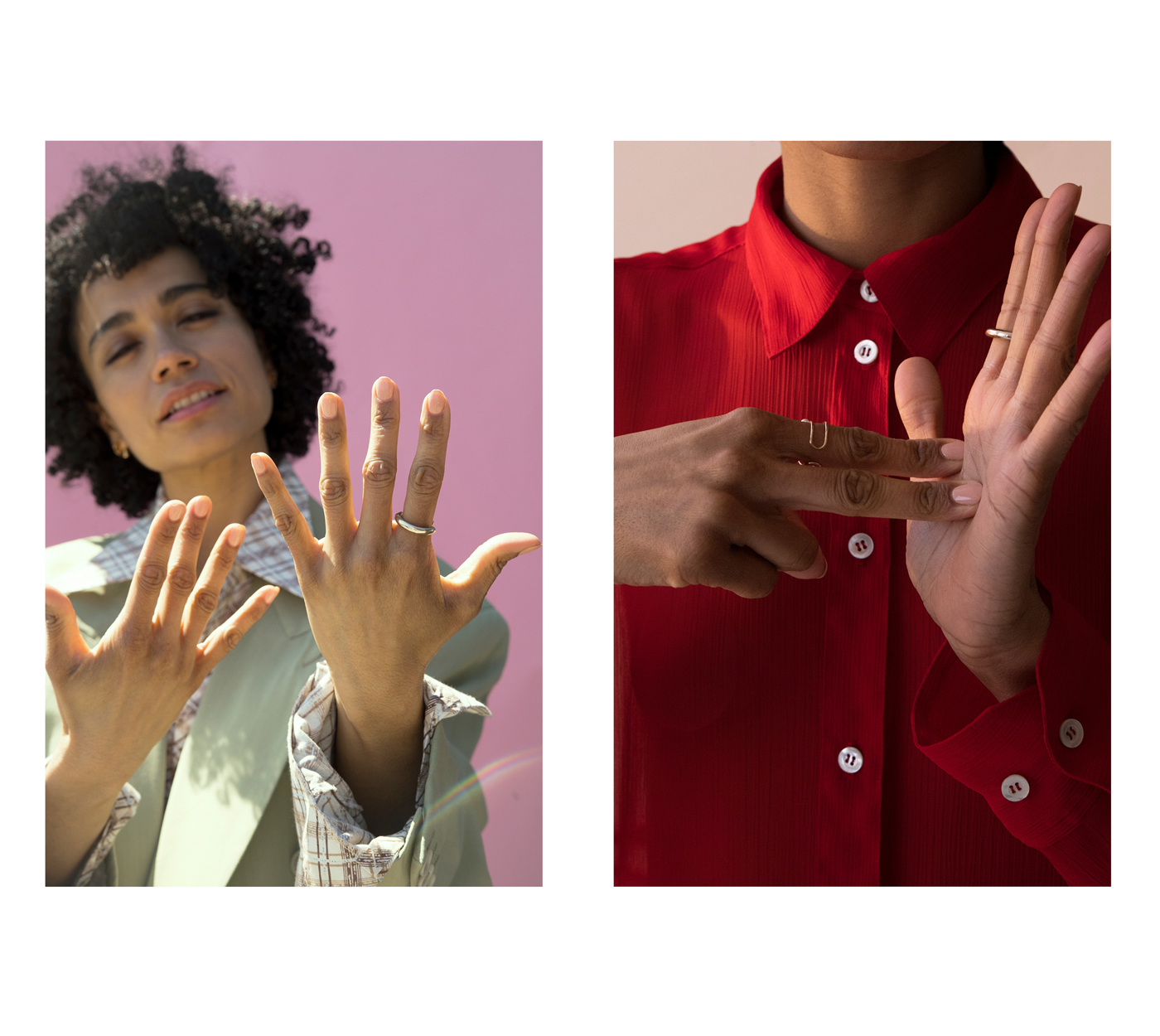
Growing up as a deaf child in a hearing family, Ridloff was strongly affected by the film version of Children of a Lesser God, which her parents took her to see when she was eight. “It had a big impact on my life to see a deaf woman who could sign on the big screen,” she recalls. “At that time, I really thought maybe I was the only deaf person on earth, so that was amazing.” Despite the power of Matlin’s Oscar-winning performance, Ridloff admits that when it came time to tackle the role of Sarah herself, she had difficulties finding her way into the character at first. “At the beginning, when I first read the script I thought Sarah was just an angry, bitter woman,” she confesses. “I thought the character was so ugly. I couldn’t relate to Sarah at first. I thought, Why does she respond like that? Why did she say this? But the more that I got into it, the more I discovered that we actually had so much in common. She is smarter, quicker, sharper than I am, so now I aspire to be a fraction of what she is.”
The daughter of a musician and an artist and the sister of a dancer—and now the wife of a poet—Ridloff has always been surrounded by creativity. When she was younger, she thought her own imagination would manifest itself in writing. She won a poetry competition her parents submitted her for as a preschooler and she enthusiastically recalls spending hours at her typewriter as a child. “I’ve always felt the need to tell stories,” she says. “Writing was my thing. I felt that my interest in character development then really helped me here in this rehearsal process to unpack and understand Sarah’s vulnerabilities and her flaws and why they make her beautiful.”
Now at the end of her first stage run, Ridloff (who also landed a small role in Todd Haynes’s film Wonderstruck again after initially coming on as a consultant) says that, more than nerves, the hardest thing to get used to about performing was how to communicate to the back of the house. Instead of raising her voice, she worked with an “artistic director of ASL” to expand her movements to increase legibility, a process that has led to her newly toned arms, she jokes. “That’s why I had that massage!” she says. “I’ve always seen signing as effortless. It’s efficient, you barely move your hands, but once you’re on stage there are specific things that you have to think about in terms of projection versus the way you speak in your everyday life. Actors use different parts of their body, supporting their speech through their diaphragm, so I have to do the same thing with my signing. Instead of just signing with my hands, I originate the movements from my spine because it ends up projecting out into the theater.” She says that getting on stage herself helped her finally understand what it is that makes her husband, who performs his poetry in ASL, so mesmerizing: “When he’s on stage, that presence is so huge. He owns the stage and you can’t miss what he’s saying.”
Though set in the Seventies (Sarah’s flared, high-waisted jeans in one scene make that clear), Children of a Lesser God continues to have enduring relevance today as a meditation on accepting differences, and, in fact, as the story of a woman taking ownership of her own expression, it has a new timeliness in an era when gender issues have come to the fore. “Sarah chooses not to use her voice and the men in the story are trying to tell Sarah what to do,” Ridloff explains. “They want to save her and it speaks volumes to any woman in today’s world with what’s going on with #MeToo and the political climate that we’re in now.” More generally, the play also speaks to connection, to the importance of hearing others for who they are, no matter how they choose to communicate. “In terms of the political climate, I also think everyone is talking at each other,” she adds. “Everyone has something to say, there’s so much being said, but who is listening to anyone and who is taking this in? I think the play is a reminder to people to be silent, to listen.”
- By
- Jonathan Shia
- Photography by
- Annelise Phillips
Styling by Carolina Orrico at Jones Management. Hair by Yukiko Tajima at See Management. Makeup by Seong Hee Park at Julian Watson Agency. Photographer’s assistant: Kasandra Torres. Stylist’s assistant: Sasha Clyde. Shot at Slate Studios, New York.
